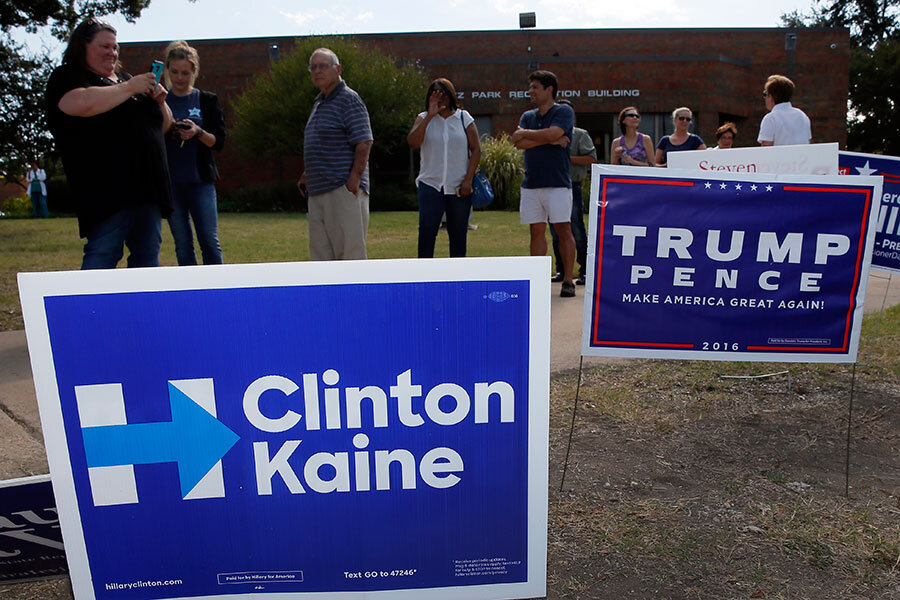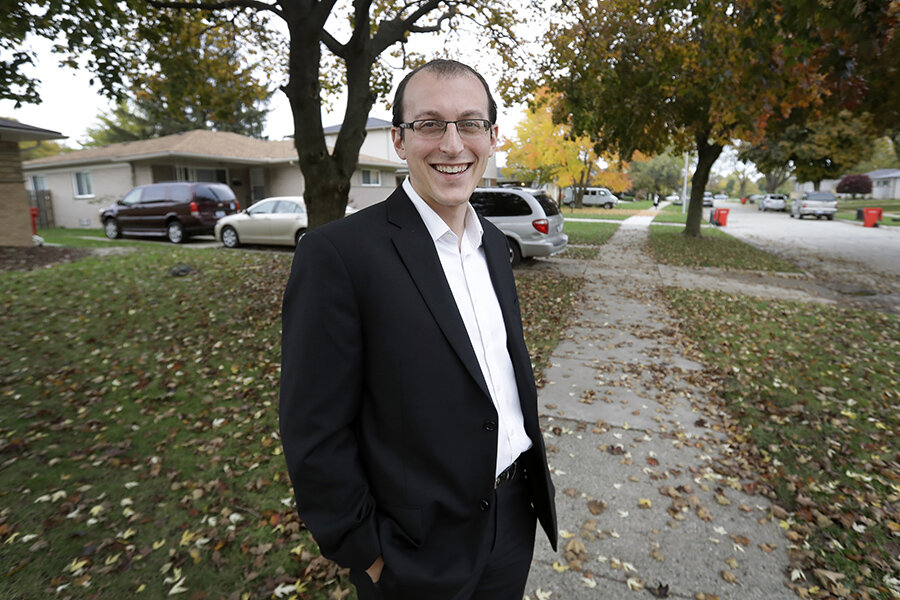How undecided voters could spring a surprise this election
Loading...
A shadow of a doubt hangs over both the Clinton and Trump campaigns during the final days of this wild 2016 election season. It’s a “known unknown,” to quote ex-Pentagon chief Donald Rumsfeld; a bounded variable; a dark star whose edges are visible but whose impact is not.
It’s the relatively high percentage of voters who haven’t lined up behind either major party presidential candidate. Normally, such undecideds sort themselves toward one side or another as November approaches. The fact that many haven’t suggests they’re still struggling with a choice they see as unpalatable.
This unusual United States indecision is one reason pollsters are finding it difficult to fine-tune their predictions for next Tuesday. It’s possible this vote could split, per usual. Or it could swing one way or another. Or it might not show up.
“Given voters’ low ratings of both candidates, I think that the large number of people who refuse to back a major-party candidate this late in the campaign is likely to be reflected in voting – these people may not vote for president at all, or they might well vote for a third-party candidate,” writes Dan Hopkins, a professor of government at the University of Pennsylvania, in an email.
The percentages involved aren’t huge. It’s not as if a third of the US electorate won’t vote for Hillary Clinton or Donald Trump. But the polls are tight. In general, the Democratic and Republican Parties are equally balanced at the presidential level. A few percentage points here or there could make all the difference in who moves into the Oval Office next Jan. 20.
Missing 7 percent
As of Friday morning, Mrs. Clinton and Mr. Trump between them are winning 87 percent of the vote, based on FiveThirtyEight.com’s average of national polls. That’s Clinton with 45.2 percent, and Trump with 41.9 percent. Libertarian Gary Johnson is getting 4.5 percent.
In contrast, at this time in 2012 Barack Obama and Mitt Romney were winning about 94 percent of the vote. The vote was tied statistically-speaking, with Obama and Romney getting about 47 percent each.
So the difference between the two elections is seven percentage points. That’s the margin that’s gone missing for Trump and Clinton in 2016. Given the closeness of the race, either candidate could mine a victory from that mother lode of undecided/third-party votes.
In a typical election year, that sort of break probably wouldn’t happen. The political truism that undecideds break for the challenger on Election Day is an old pollsters’ tale, unsupported by the evidence.
“Undecideds usually split (about) evenly between candidates or don’t vote,” emails Matt Grossmann, a political scientist at Michigan State University and co-author of the new book “Asymmetric Politics: Ideological Republicans and Group Interest Democrats.”
That’s true in part because typically most undecideds are about as partisan as the rest of the electorate. They’re not neutral arbiters still weighing their options.
Still partisan, but disgruntled
In fact, many undecideds are “disgruntled partisans,” write political scientists John Sides and Lynn Vavreck in their book about the 2012 campaign, “The Gamble.” They’re GOP or Democratic voters who don’t like their party nominee or are otherwise dissatisfied with their partisan option.
That might explain this year’s high number of such voters. Trump and Clinton have unprecedentedly high negative opinions, after all. Trump won the GOP nomination in part because he had a committed plurality of voters and his many challengers split the rest. Clinton’s victory over Bernie Sanders was a much more near-run thing than her initial edge in money and endorsements indicated.
Voters who did not back their party’s choice in primary season remain significantly less enthusiastic about that nominee, according to Pew Research data. Trump primary voters currently rate their man at 81 on a “thermometer” scale, where 100 is the warmest, most positive feeling. Republicans who backed another candidate rate Trump at 57. Clinton’s primary voters peg her at 81 on the thermometer scale as well. Sanders voters are cooler, coming in at 59, according to Pew.
Right now, getting these partisans to come home and vote for their party is probably a huge priority for each campaign. They’re unusually resistant this year – about as many voters have moved away from the two major candidates over the course of the 2016 political season as have moved toward them, writes Dan Hopkins in a recent FiveThirtyEight analysis.
But given the current narrow margin between Clinton and Trump, victory may hang in the balance if one party or the other is more successful in the effort.







